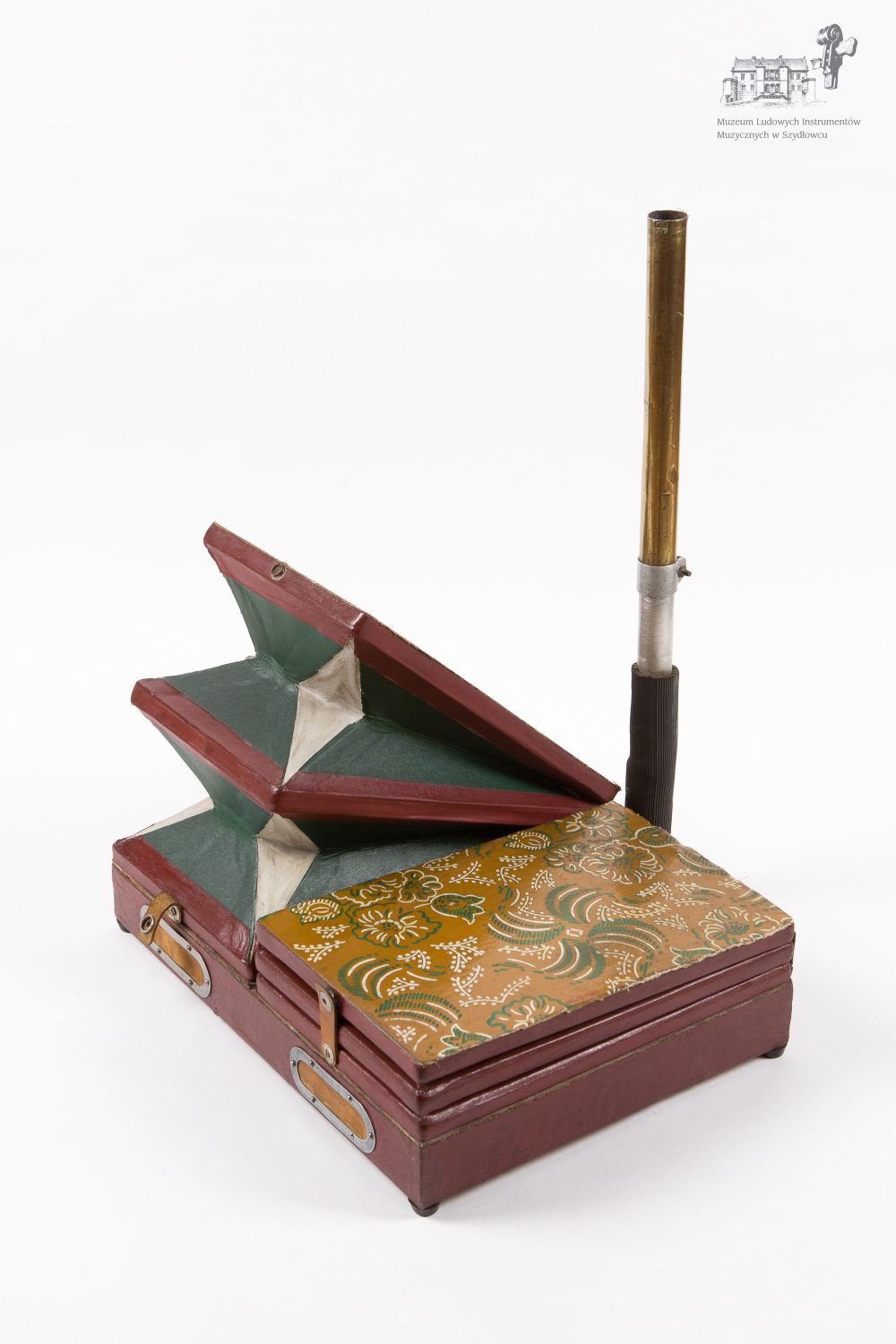pedal accordion
pedal accordion
Local name: pedałówkaClassification: 4 Aerophones / 41 Free aerophones / 412 Interruptive free aerophones / 412.1 Idiophonic interruptive aerophones or reeds / 412.13 Free reeds / 412.132 Sets of free reeds / 412.132-62-8 Sets of free reeds with flexible air reservoir, with keyboard
Maker: Sawiejko Wiktor
Date: first half of the 20th c.
Village / Town: Warsaw
Region: Mazovia
Country: Poland
Owner: Museum of Folk Musical Instruments in Szydłowiec
Inventory number: MS/S/181
Description: a pedal accordion; called "white"; chromatic; three-row keyboard with 17+18+17 keys, 24 basses (buttons); bellows connected to the instrument with a two-piece pipe
Decoration: body embellished with engraved and colored floral patterns; open work with stylized geometric and floral motives; pedals covered with colorful oilcloth, decorated with floral motives
Measurements: body 380 x 350 mm, pedal 340 x 435 mm
Materials: wood, metal, plastic
Inscriptions: W Sawiejko Warszawa
Sound compass, tuning: different scales depending on the type and specimen; usually the melody keyboard is arranged in minor-third rows composing the chromatic scale B♭– b♭´´´, while the bass side is arranged in the chromatic scale C – b, which makes it possible to get all major triads.
Performance practice: after World War I the accordion became a popular component of folk bands (together with the violin and the drum); the pedal type being especially popular in Mazovia on the right side of the Vistula river (the region of Kurpie and the area of Garwolin), to some degree also in Podlasie (Podlachia)
Catalog card by: Maria Gangi / Zbigniew J. Przerembski
A Crane, a dance tune; Fafur, a dance tune; Józef Mróz (1917-1997, Kadzidło), pedal accordion; rec. Kadzidło 1982; Sources of Polish Folk Music
<< Back















